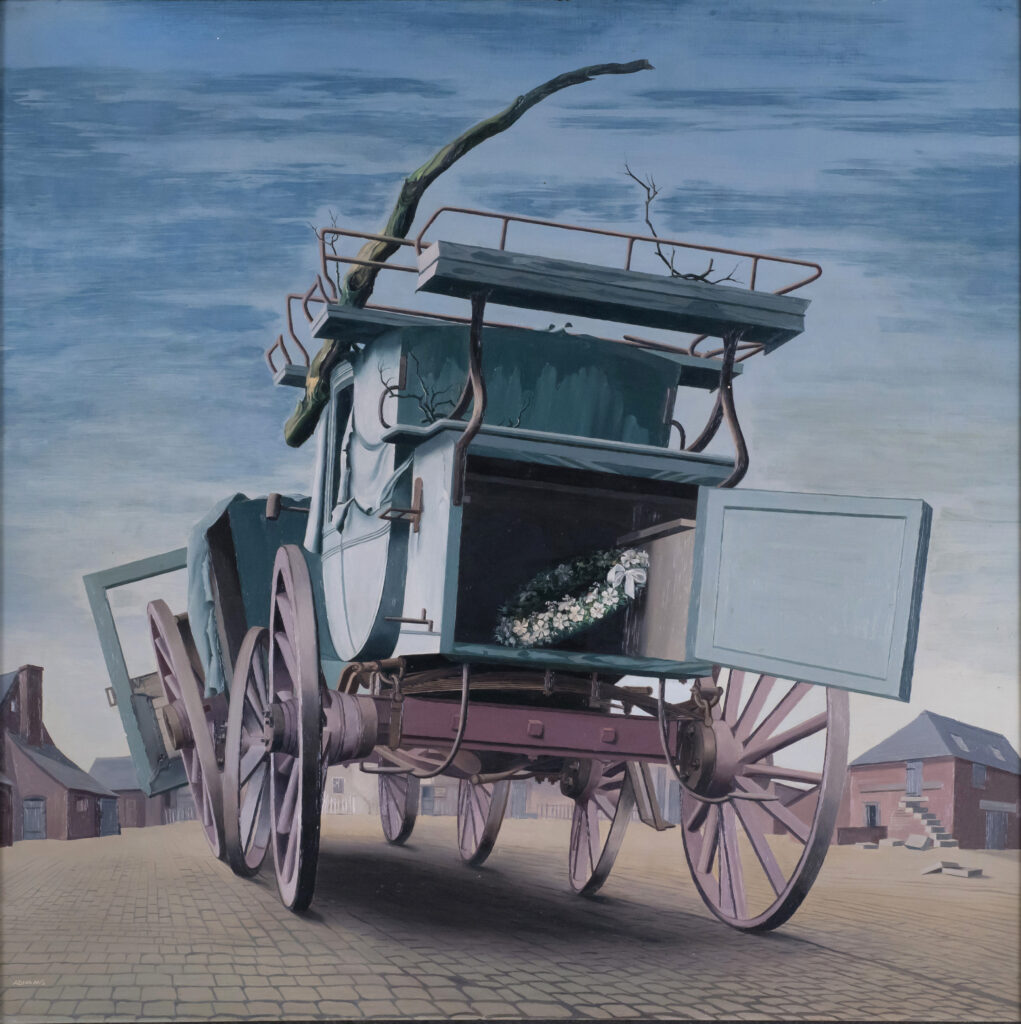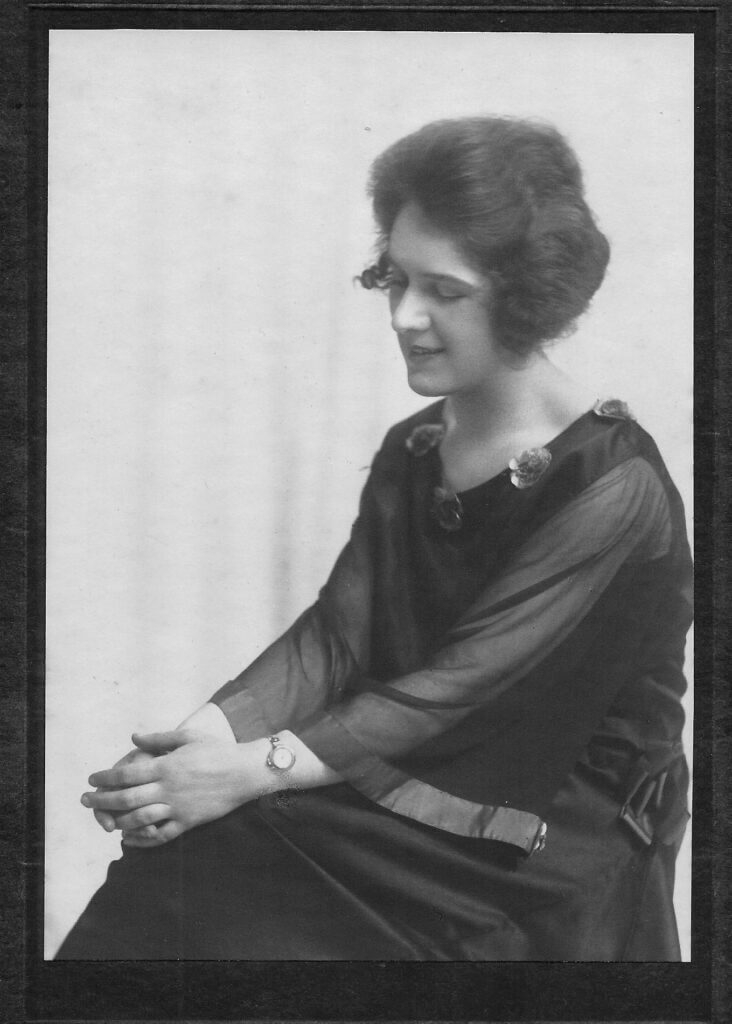Your currently viewing RAW Modern | Switch to RAW Contemporary
Floral Tribute, 1962
Catalogue essay by Blanche Llewellyn
Marion Adnams began to paint in 1937 and she continued until she was forced to stop, losing her eyesight in 1968. During her career, Adnams forged a reputation as a painter of deeply distinctive and dream-like visions inspired by the Surrealist movement.
Floral Tribute was first shown in the Salford Art Gallery in August 1962 and then later in the same year in exhibitions at Fletching and Nottingham. Part of an iconic series of carriage paintings, Floral Tribute was described in The Guardian as a “powerful but sad, even macabre vision of old broken-down coaches in a Dali wilderness” (John Rooks, 1986).
In her unpublished autobiography “The Enchanted Country”, Marion Adnams wrote “Back in Derby (her hometown), I found that there were three paintings nicely finished in my head, waiting to be transferred to their panels. So, as autumn turned to winter, I began to work furiously. First came a painting of the old coach I had seen at Redbourne earlier in the year. But now I saw it, not as I had seen it then, standing in the sunshine, under the elms at Silverhill Farm, but in a dark mysterious wood at midnight(…) So in February I began “Floral Tribute”. Once more I was painting the rear. I had always been fascinated by that cavernous boot, so deep and so empty. There was no hiding it: the door swung open and would not stay closed. I felt I had to put something inside. But what? Even as I asked the question, I knew. So the carriage brings a funeral wreath, in memory of itself. For the stone sets vanishing to a low horizon. There were buildings all round, but no people. The carriage was abandoned, but not forlorn.”

